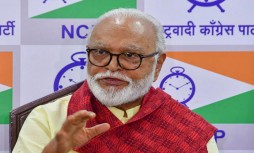National Logistics Policy is PM Modi's latest move to turn India into a global factory; here's how
September 23,2022
After aggressively pushing for local manufacturing, the government is now gearing up for another major transformational push that is imperative for the country’s Atmanirbhar goals. While the local manufacturing push has already resulted in leading companies - from Apple to Mercedes - increase their India manufacturing base in the last few years, the latest move by Prime Minister Narendra Modi may prove to be crucial for reviving the country’s fledgling logistics sector and boost India’s local manufacturing further.
Last week, the PM unveiled the National Logistics Policy (NLP), following which the union cabinet gave its nod on the new policy document yesterday. “The Cabinet decision on India's Logistics Policy will accelerate growth and increase our participation in global trade. Our efforts in the Logistics sector will particularly benefit our farmers and the MSME sector,” said PM Modi.
According to Prime Minister Modi, through the NLP, the government aims to bring down the cost of logistics to single digit levels from 13-14 per cent of the gross domestics (DGP) product of the country. The policy makers have set three key targets: First, to reduce cost of logistics in India to be comparable to global benchmarks by 2030. Second, improving the logistics performance index ranking and to be among top 25 countries by the end of the decade and, third, to create data driven decision support mechanism for an efficient logistics ecosystem.
Why the industry is gung-ho
Since its launch, the industry stakeholders and experts have cheered the move. While the government has been bullish about turning India into a global manufacturing hub, according to them, improving logistical support ecosystem in the country will play a critical role.
According to Mahendra Shah, Chairman and Group Managing Director, V-Trans (India) Ltd - a single window logistics solution provider - this is much-needed love that the sector was awaiting. “The focus areas in the policy include employment generation, skilling, reducing costs, process re-engineering, digitisation and multi-modal transport, among others. It is a significant move as the high logistics cos brings down the competitiveness of domestic goods in the international market. The difference between logistic cost to GDP in India and the developed world is very significant - 14 per cent in India, compared to 8 per cent in developed world,” he said.
The sector-specific logistics plan laid down in the NLP, and strengthened cooperative federalism will make India a global digital logistics hub, says Pervinder Singh Chawla, Co-Founder at OnMove by Zast Logisolutions. “The much awaited New Logistics Policy is a transformative approach for economic growth and sustainable development. In India, where the road transportation dominates the logistics sector, with a dominant share of 60 percent, the shift towards multimodal infrastructure with a mix of rail, shipping, road, and air transport, will help reduce the congestion on roads along with low crude import bills. The policy addresses the pre-existing concerns in India’s logistics sector from a global perspective,” he said.
According to Zaiba Sarang, Co-founder, iThink Logistics, the NLP would allow the smallest of person in the ecosystem to get access to information that was available only to the key stakeholders. “NLP also helps the last mile to be more efficient and faster to fill up the gap of transporter where business can benefit in terms of time and cost,” he said. Currently, logistics is providing livelihood to more than 22 million people. In India, 85 per cent logistics players own less than 10 trucks and the NLP could prove to be crucial in helping them utilise their resources better, reducing idle time and improving profitability.
Sachin Agrawal, Co-Founder & CEO of Bizongo - a tech-enabled B2B e-commerce & supply chain platform - says, the most crucial part of the policy is the integration of technology and launch of single window e-logistics marketplace that will relieve the stress of shipment allocations and offer businesses more control over supply chains. “This becomes even more integral as both B2B and B2C e-commerce markets expand rapidly in India. Considering that e-commerce has a direct impact on warehouse, logistics, and supply chain businesses, the pressure on these industries is also growing multifold,” he said.
According to Chandrakant Patel, MD, Ice Make Refrigeration, currently, higher logistics cost is resulting in a competitiveness gap of $180 billion for India. This is estimated to go up to $500 billion by 2030. “India is short by 100 MT of cold storage capacity and over 100,000 refrigerated trucks and there is an urgent need to fill this huge capacity gap to bring India at par with its global peers. Our global counterparts like US and China have many times bigger capacities of cold supply chain infra including a fleet of five and two lakh plus reefer vehicles,” he said.





















